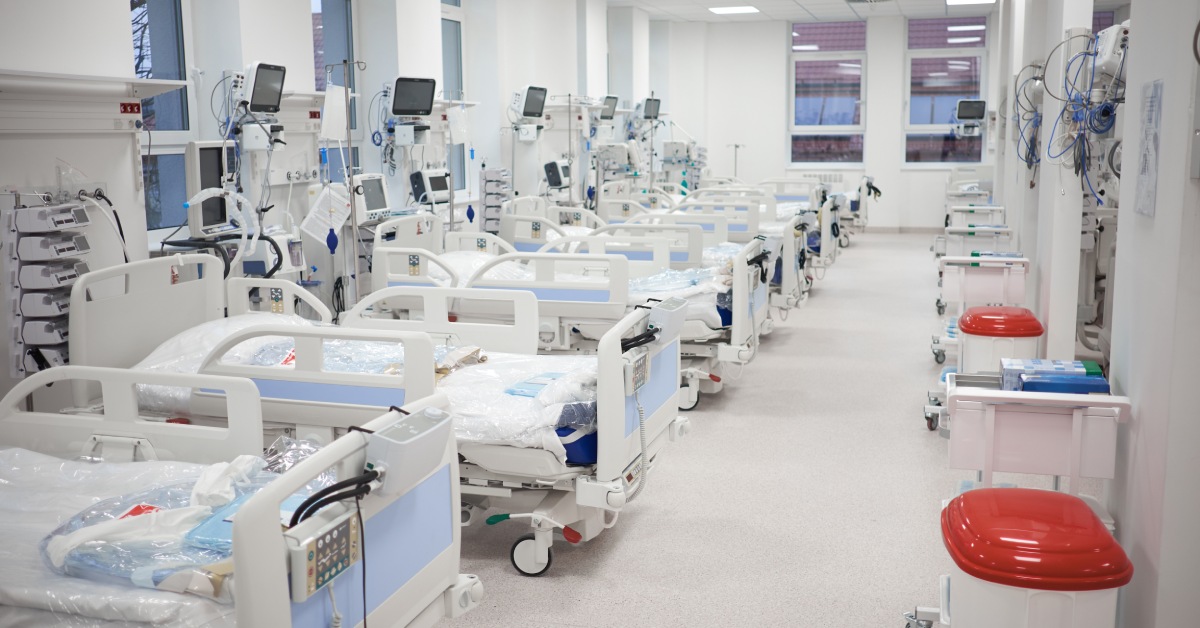For healthcare facilities, selecting the right equipment requires a balance between quality and budget. Hospital beds are essential for facilitating patient mobility, supporting medical procedures, and enhancing patient safety. A cost-benefit analysis of new versus used hospital beds can unveil opportunities to optimize expenses without compromising on patient care. Explore the factors healthcare administrators should consider when deciding between new and used medical beds.
Upfront Costs
A used hospital bed can cost hundreds to thousands of dollars less than a brand-new one, depending on the bed’s features. Budget-conscious facilities benefit from maximizing their purchasing power, and with careful selection, used beds can provide quality care at a fraction of the cost.
However, not all used beds are equal. The condition and age of the beds can vary, affecting their value. Facilities must evaluate the cost against potential refurbishment expenses. A well-maintained used bed often provides a good balance between cost and functionality.
Consider how various hospital bed features can affect their purchase price:
- Beds with advanced adjustability options, such as motorized height adjustments, often have higher initial costs.
- Hospital beds constructed from durable, high-quality materials may carry a premium price tag due to their longevity and performance.
- Beds equipped with built-in technological features like electronic monitors or communication systems typically require a larger financial investment.
- Renowned manufacturers may charge more for their beds, reflecting the perceived reliability and track record of the brand. Used medical beds from trusted brands also cost more than their lesser-known counterparts.
- Beds with comprehensive warranties might have steeper upfront costs, as these warranties provide added value and security.
- Beds that meet more stringent regulatory standards may be priced higher due to the additional certifications or testing required.

Reliability
Unreliable hospital beds can lead to increased costs due to the need for frequent repairs and potential equipment downtime. This not only drains financial resources but also impacts operational efficiency. New hospital beds are often associated with cutting-edge technology and reliability. However, healthcare facilities can buy reliable used beds by purchasing from a transparent, experienced supplier.
Selecting high-quality, pre-owned models allows facilities to maintain operational efficiency without the hefty price tag of brand-new beds. Reconditioned hospital beds are expected to meet rigorous reliability standards, such as adherence to original manufacturer specifications and compliance with health and safety regulations. These standards guarantee that the beds are safe for patient use.
Piedmont’s Reconditioning Process
At Piedmont Medical, we ensure that every piece of equipment works as it should through a rigorous process, which involves testing, reconditioning, and adhering to stringent quality standards. Our 10-step reconditioning process begins with a thorough visual inspection and repair of the hospital bed frame, followed by complete disassembly for cleaning. The frame and its components are sanded, painted, and left to dry before being reassembled with new parts if necessary. The bed is then subjected to rigorous electrical safety testing to ensure it meets manufacturers’ standards and is securely shipped to guarantee its pristine condition.
Opportunity Cost
The opportunity cost of new versus used hospital beds is a crucial consideration when running a cost-benefit analysis. Choosing used beds can free up capital for other essential equipment or technological upgrades. This strategic allocation enhances overall patient care and can lead to greater long-term benefits.
Here are some productive ways healthcare facilities can spend the money they save on used hospital beds:
- Invest in advanced medical equipment to improve diagnostic and treatment capabilities.
- Enhance staff training programs to ensure high-quality patient care and safety.
- Upgrade facility infrastructure to provide a more comfortable and efficient environment for patients and staff.
- Expand patient support services, such as counseling and rehabilitation programs.
- Fund research and development initiatives to contribute to medical innovations.
- Improve information technology systems to streamline operations and data management.
- Increase inventory of essential medical supplies to ensure readiness for emergencies.
The opportunity cost of selecting new beds involves potential compromises elsewhere. Facilities must balance immediate bed quality with other critical needs. By opting for used beds, healthcare providers can channel resources into other initiatives that improve quality of care.

Lead Times
Lead time is the interval between placing an order and the delivery of the equipment to the healthcare facility. Lead times can impact the availability of essential resources, which in turn affects patient care delivery and operational scheduling. Short lead times are often preferred to ensure that medical facilities can quickly adapt to changing needs or emergencies. Efficient lead times also help with inventory management.
Used hospital furniture for sale often boasts shorter lead times compared to new models. Reconditioned equipment is typically readily available because it bypasses the lengthy manufacturing processes required for new items. Suppliers of reconditioned equipment often have many models available for timely delivery. This availability can significantly benefit facilities that require replacement equipment quickly or are expanding their services.
In contrast, brand-new hospital furniture may require longer manufacturing and assembly periods before it reaches the customer. Additionally, customized orders for new equipment further extend lead times due to production and quality assurance processes.
Warranties and Support
Warranties and customer support offer protection against unforeseen expenses related to maintenance and repairs, potentially reducing long-term costs. New hospital beds typically come with comprehensive warranties that ensure peace of mind but can contribute to higher initial purchase prices. In contrast, used beds might offer limited or no warranties, making the inclusion of a support plan a vital consideration.
Piedmont Medical provides a one-year parts replacement warranty, complemented by expert technical assistance available via phone. This service allows customers to confidently manage repairs with our expertise. Additionally, for hospital beds or stretchers that are out of warranty, we continue to offer reliable phone-based technical assistance. This ongoing support ensures that your facility remains well-equipped to deliver quality patient care.
Deciding between new and used hospital beds involves careful consideration of various factors, including cost, reliability, and lead time. Used beds offer significant financial savings and provide facilities with the flexibility to allocate resources to other crucial areas. While new beds deliver the assurance of advanced technology and comprehensive warranties, healthcare providers can equip their facilities with state-of-the-art reconditioned beds thanks to extensive available inventories. This analysis shows that investing in used beds is a strategic decision for optimizing budgets and upholding care standards.


Recent Comments